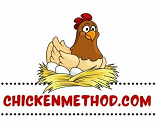
When it comes to raising chickens, choosing the right bedding for your coop is crucial. Not only does bedding provide comfort to your feathered friends, but it also plays a vital role in maintaining their health and promoting optimal egg production. In this article, we will explore the purpose of chicken bedding and compare various materials to help you make an informed decision for your flock.
The Purpose of Chicken Bedding
Comfort
Chickens, like any living creature, appreciate a comfortable living space. A cozy coop helps reduce stress and promotes overall well-being. The right bedding material cushions their feet, provides insulation, and offers a sense of security. Your chickens will happily spend their days scratching and nesting on comfortable bedding, ensuring their contentment.
Health
Maintaining good hygiene is essential in chicken coops to prevent the spread of diseases. Bedding plays a significant role in this aspect. It absorbs moisture, such as droppings and spilled water, helping to keep the coop dry. Additionally, certain bedding materials possess antimicrobial properties that can inhibit the growth of harmful bacteria, further safeguarding your flock’s health.
Egg Protection
If you have hens, protecting their precious eggs is of utmost importance. Bedding materials act as a cushioning layer, reducing the likelihood of eggs breaking or getting soiled. Clean and intact eggs are not only visually appealing but also easier to handle and store.
Types of Chicken Bedding
Wood Shavings
Pros:
- Very absorbent: Helps keep the coop dry and odor-free.
- Fairly good insulator: Keeps the chickens warm during colder months.
- Easy to find and reasonably priced.
Cons:
- Quality can vary: Some wood shavings, especially cedar, can have oils that are harmful to chickens.
- Not ideal for dust baths.
Sand
Pros:
- Excellent for dust baths: Chickens enjoy bathing in sand.
- Easy to clean: Droppings can be easily sifted out.
- Good insulator in warmer climates: Sand stays cool when the weather is hot.
Cons:
- Poor insulator in cold climates: Sand does not retain heat well.
- Not as absorbent as wood shavings or straw.
- Can be heavy and hard to manage in larger coops.
Straw
Pros:
- Good insulator: Keeps the coop warm during the colder months.
- Composts easily: Breaks down quickly and can be added directly to garden beds.
- Chickens often enjoy scratching and pecking through straw.
Cons:
- Not as absorbent as wood shavings: The coop may need more frequent cleaning.
- Can harbor mites and other pests if not managed properly.
- Can be expensive and hard to find, depending on your location.
Pine Needles
Pros:
- Generally free and easy to source, especially in areas with lots of pine trees.
- Provides a good scratching environment for chickens.
Cons:
- Not very absorbent: Does not handle moisture well.
- Poor insulator: Will not keep a coop warm during the colder months.
- Can be sharp and potentially harmful if ingested by chickens.
It’s essential to note that the “best” bedding material can depend on your specific situation and the needs of your chickens. Factors like climate, coop design, the number of chickens, and how often you can clean the coop can all play a significant role in determining the most suitable bedding material.
Chicken Bedding Comparison
Let’s compare the various bedding materials based on several important factors:
Cost
The cost of bedding materials can vary. Straw and pine needles tend to be more affordable, while wood shavings and sand may require a higher budget. Cost, of course, is a relative term. You have to ask yourself what degree of difficulty are you willing to put yourself through to get your bedding.
Comfort
Wood shavings provide excellent comfort, followed by straw, sand, and pine needles in order of preference.
Health Impact
Wood shavings and pine needles have antimicrobial properties, making them more beneficial for maintaining a healthier coop environment.
Maintenance
Sand is the easiest to clean, requiring minimal effort, while straw and wood shavings need regular replacement to maintain cleanliness.
Availability
The availability of bedding materials can vary based on your location. Straw and wood shavings are generally more widely accessible, while sand and pine needles may require more effort to source.
Factors to Consider when Choosing Bedding
When selecting the ideal bedding material for your chickens, consider the following factors:
- Your chicken’s specific needs, such as age and breed
- Your coop’s design and available space
- Your local climate and weather conditions, including temperature and humidity
- Your budget and availability of bedding materials in your area
Changing and Maintaining Bedding
To ensure a clean and healthy environment for your chickens, it’s important to know when and how to change bedding. Signs that bedding needs to be changed include foul odors, excessive moisture, or visible contamination. Regularly maintaining clean and healthy bedding involves removing soiled areas, spot-cleaning as needed, and replenishing with fresh material.
Conclusion
Choosing the right bedding material is essential for providing a comfortable and healthy living environment for your chickens. Consider the comfort, health impact, cost, maintenance requirements, and availability when making your decision. Remember, each flock is unique, so it’s crucial to tailor your choice to their specific needs. By selecting the right bedding, you’ll ensure the happiness, well-being, and optimal egg production of your feathered friends. For further research and personalized advice, feel free to explore reputable sources and consult fellow chicken enthusiasts.
Thanks for reading and thanks in advance for leaving a comment. Take care!
Dave
Chickenmethod.com



